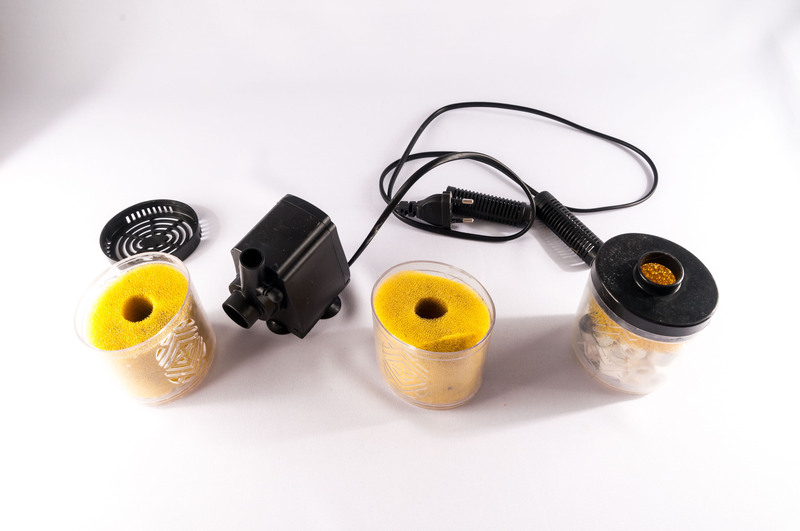Crafting the Perfect Packing Plan for Your Move
Posted on 22/05/2025
Crafting the Perfect Packing Plan for Your Move
Moving to a new home is a thrilling adventure--but it often comes with a fair amount of chaos and stress. The key to transforming moving day into a seamless experience lies in creating a well-thought-out packing plan. In this comprehensive guide, we'll walk you through every step of crafting the perfect packing plan for your move. Whether you're relocating across the city or the country, these strategies will help you stay organized, save time, and protect your precious belongings.
Why an Organized Packing Plan is Essential
Many people underestimate the importance of planning. Without a strategy, packing can become overwhelming, items can be misplaced or damaged, and the entire move may take longer than necessary. A thoughtfully crafted packing plan allows you to:
- Reduce stress by breaking down the process into manageable steps.
- Avoid last-minute scrambling and forgotten items.
- Protect fragile items with the proper materials.
- Save money by using the right amount of supplies.
- Unpack efficiently in your new home.
Let's jump into the details of creating a perfect packing plan and set yourself up for a smooth relocation.

Step 1: Start Preparing Early
Preparation is the cornerstone of any successful packaging plan for moving. Ideally, begin planning your move about 6-8 weeks in advance. Here's how to get started:
- Create a moving timeline. Mark your moving date and work backwards to assign packing goals for each week.
- List all tasks. Break down every step--sorting, packing, labeling, etc.--so nothing is forgotten.
- Set reminders. Use a planner or digital calendar to stay on track.
The earlier you start, the less overwhelming the process will be!
Declutter Your Belongings
Before you even touch a box, assess what you actually want to move to your new home. Decluttering is key to an efficient packing plan for relocation:
- Sort items into four categories: Keep, Sell, Donate, Toss.
- Be honest--if you haven't used something in a year, consider letting it go.
- Hold a garage sale or use online marketplaces to sell usable items.
- Donate gently used goods to local charities.
- Properly dispose of broken or unusable items.
Decluttering now will save you time, effort, and money on moving supplies later!
Step 2: Gather High-Quality Packing Supplies
Investing in the right supplies is crucial to your packing success. Here's a comprehensive packing supply checklist for optimizing your plan:
- Sturdy boxes in various sizes (small for books, large for linens, etc.)
- Bubble wrap and packing paper for cushioning fragile items.
- Packing tape & scissors--choose a tape that adheres well and resists tearing.
- Markers and labels--prepare to clearly label every box by room and contents.
- Specialty supplies (wardrobe boxes, TV boxes, mattress bags) for unique items.
- Plastic bins for items you'll need immediate access to when you arrive.
- Trash bags for loose items or soft goods.
Tip: Start collecting boxes from grocery stores or friends months in advance to reduce costs.
Reserve Specialty Boxes
For items such as art, mirrors, or electronics, use custom-fit boxes for added protection. This extra step in your relocation packing plan safeguards your valuables.
Step 3: Create a Packing Strategy Room-by-Room
Now that you've decluttered and gathered supplies, it's time to create a logical, room-by-room packing schedule.
- Start with non-essentials. Pack items you won't use before the move--seasonal clothes, special-occasion dishes, decor items--first.
- Move to less-frequented rooms. Attics, basements, guest rooms, and storage areas can be packed up next.
- Leave daily essentials for last. Keep frequently used kitchenware, toiletries, and clothing out until the final days.
This approach ensures you're not living out of boxes for weeks and can maintain some sense of normalcy.
Make a Packing Calendar
Assign each room a specific week or set of days. Outline what will be packed and when, aligning this schedule with your overall moving timeline. Stick to your calendar to stay organized and craft the best packing plan for your move.
Step 4: Use Smart Packing Techniques
Efficient packing isn't just about putting things in boxes--it's about using space wisely and protecting your belongings.
General Packing Tips
- Heavy items go in small boxes, light items in large boxes.
- Distribute weight evenly. Avoid overpacking to prevent box breakage or injury.
- Wrap fragile items individually with packing paper or bubble wrap.
- Fill empty spaces with towels, linens, or crumpled paper to prevent shifting.
- Keep hardware in labeled bags. When disassembling furniture, store screws/bolts in zip-lock bags taped to the appropriate item.
- Seal boxes tightly and reinforce the bottoms.
- Label boxes on multiple sides. Note contents, destination room, and handling instructions.
Packing Fragile and Special Items
- Plates: Pack vertically with padding between each plate.
- Glasses and stemware: Use dividers for added protection.
- Electronics: Use original packaging or custom-fit boxes when possible.
- Clothes: Keep hanging garments on hangers in wardrobe boxes.
Essentials Box
Pack an "essentials box" or suitcase with the items you'll need immediately upon arrival: toiletries, a change of clothes, medications, chargers, important documents, snacks, and basic cleaning supplies. This ensures you don't have to hunt for necessities on your first night.
Step 5: Label, Inventory, and Track Your Boxes
A hallmark of the perfect packing plan for moving is precise labeling and inventory management. Here's how to do it:
- Label each box with the destination room and a brief description.
- Assign numbers to boxes. Keep a master list noting the contents and box number--this helps if anything goes missing.
- Color code by room. Use colored tape or markers for quick identification at a glance.
- Take photos of valuable or complicated setups. Snap pictures of electronics wiring or the arrangement of decorative items to ease the reassembly process.
Proper labeling lets you unload boxes directly into their intended room, saving time and effort during unpacking.
Step 6: Minimize Stress with a Moving Day Checklist
You've crafted your ultimate packing plan for moving, but don't forget about moving day itself! Stay organized by preparing a last-minute checklist:
- Create a moving day kit with essential supplies, snacks, water, and important paperwork.
- Confirm transportation arrangements. Double-check details with your moving company or rental truck.
- Protect floors and doorways. Use old blankets or cardboard to prevent damage during loading.
- Do a final walkthrough of your empty home to check for forgotten belongings.
- Direct movers or helpers using your labeling system.
With your packing plan in place, you'll be able to focus on the essentials and ensure nothing is overlooked.
Common Packing Mistakes to Avoid
Even the best packing plan for moving can be derailed by careless errors. Avoid these common pitfalls:
- Procrastinating--last-minute packing leads to rushed, careless mistakes.
- Underestimating box needs--it's better to have extra boxes than too few.
- Poor labeling--unlabeled boxes make unpacking a nightmare.
- Ignoring specialty items--fragile items need extra care and custom boxes.
- Overloading boxes--this risks injury and box breakage.
- Skipping the essentials box--don't leave yourself stranded without what you need on the first day.
Moving With Kids or Pets? Tips for a Smooth Transition
Include the entire family in your packing plan for added support and excitement. Here's how:
- Let children help pack their belongings and decorate their boxes.
- Keep comfort items (toys, blankets) accessible for the children and pets.
- Designate a pet-safe zone on moving day to keep furry friends secure and calm.
- Plan activities for kids during the chaos of loading/unloading.
- Discuss the move with your children in advance to manage expectations and reduce anxiety.
Eco-Friendly Packing Plan Ideas
Make sustainability part of your packing plan for moving by:
- Reusing boxes and supplies from previous moves or local stores.
- Using towels, blankets, and clothing instead of buying additional bubble wrap.
- Recycling packing materials or donating them after your move.
- Renting reusable plastic moving boxes.
Packing Plan for a Long-Distance Move
Interstate or cross-country moves bring additional hurdles. Your long-distance packing plan should focus on:
- Protecting belongings for the long haul with extra cushioning.
- Keeping an inventory for insurance purposes.
- Shipping important documents and valuables separately.
- Planning for different climates by packing appropriate clothing accessible.

Final Tips for the Perfect Packing Plan
- Stay flexible and expect the unexpected. Not everything will go as planned--give yourself extra time for each step.
- Ask for help. Enlist friends, family, or professional packers for support.
- Celebrate small milestones. Take time to acknowledge your progress during the packing process.
- Keep important paperwork handy. Store all moving contracts, receipts, and new home documents in a dedicated binder or folder.
Conclusion: Moving Forward with Confidence
Crafting the perfect packing plan for your move isn't just about packing boxes--it's about managing time, resources, and stress, so that you can start your new chapter on the right foot. By following these comprehensive steps--from planning and decluttering to inventory and moving day execution--you'll turn what could be a daunting project into an organized, efficient, and even enjoyable experience.
Ready to move? Start building your personalized packing plan today, and embrace your journey to a new home with confidence and clarity!







